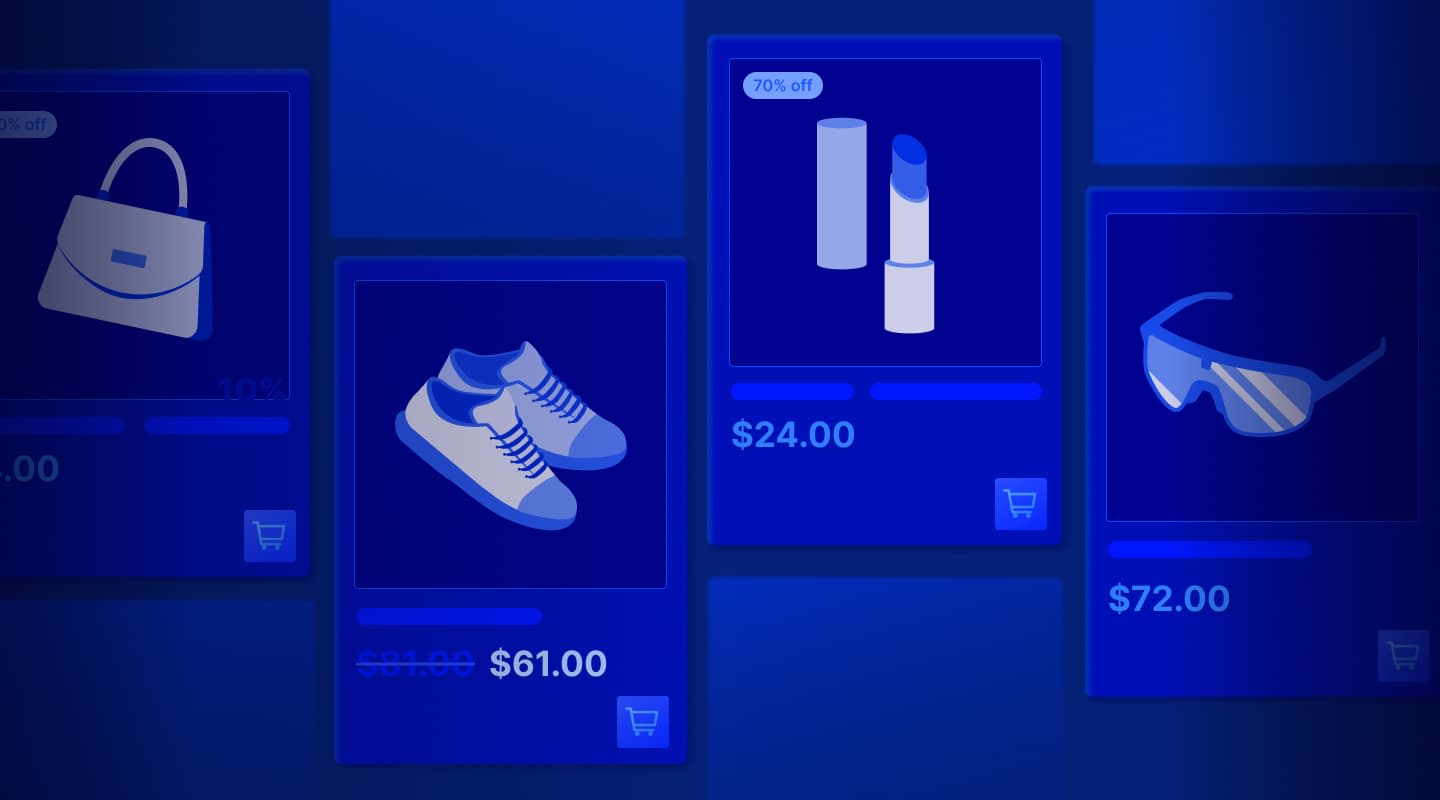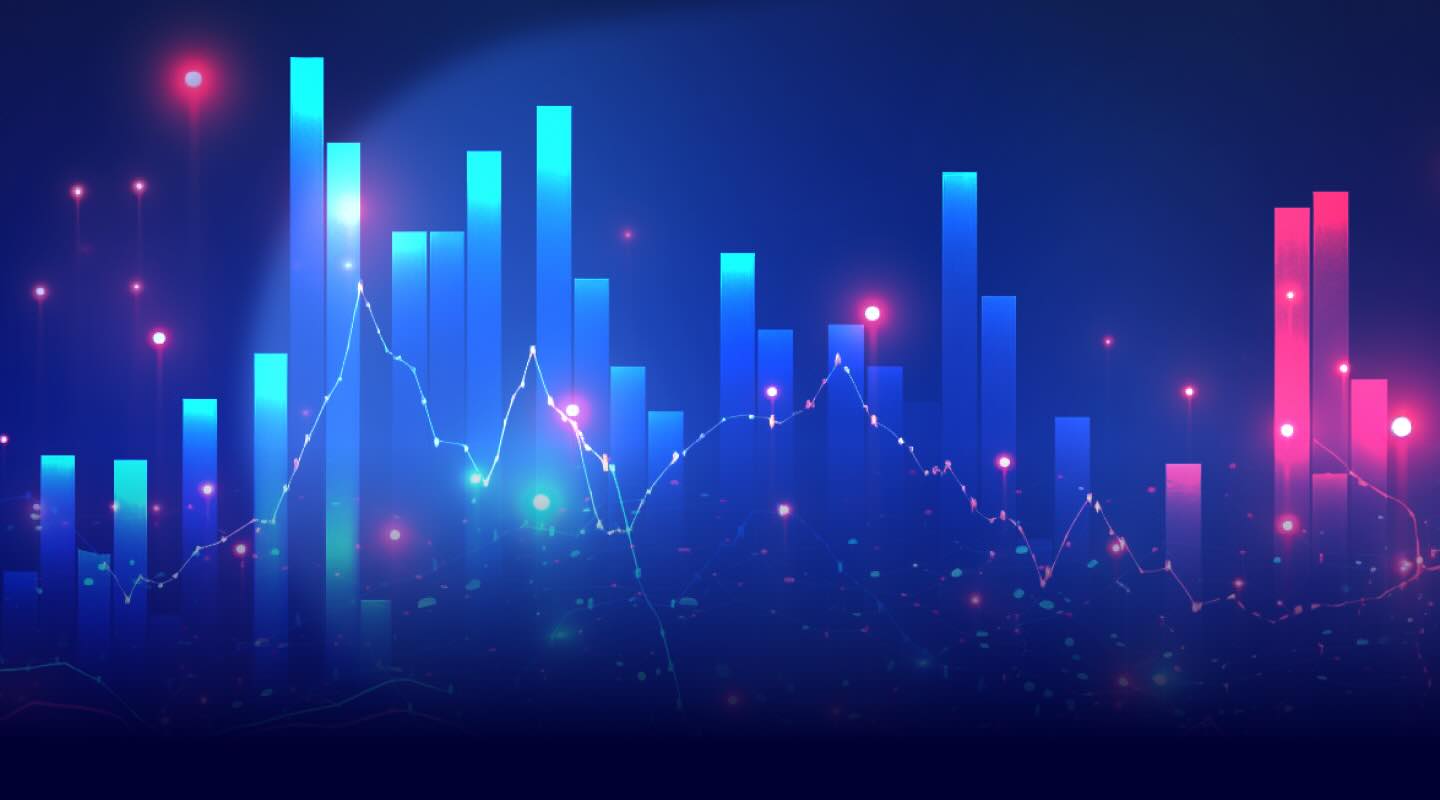Add InstantSearch and Autocomplete to your search experience in just 5 minutes
A good starting point for building a comprehensive search experience is a straightforward app template. When crafting your application’s ...
Senior Product Manager

A good starting point for building a comprehensive search experience is a straightforward app template. When crafting your application’s ...
Senior Product Manager

The inviting ecommerce website template that balances bright colors with plenty of white space. The stylized fonts for the headers ...
Search and Discovery writer

Imagine an online shopping experience designed to reflect your unique consumer needs and preferences — a digital world shaped completely around ...
Senior Digital Marketing Manager, SEO

Winter is here for those in the northern hemisphere, with thoughts drifting toward cozy blankets and mulled wine. But before ...
Sr. Developer Relations Engineer

What if there were a way to persuade shoppers who find your ecommerce site, ultimately making it to a product ...
Senior Digital Marketing Manager, SEO

This year a bunch of our engineers from our Sydney office attended GopherCon AU at University of Technology, Sydney, in ...
David Howden &
James Kozianski

Second only to personalization, conversational commerce has been a hot topic of conversation (pun intended) amongst retailers for the better ...
Principal, Klein4Retail

Algolia’s Recommend complements site search and discovery. As customers browse or search your site, dynamic recommendations encourage customers to ...
Frontend Engineer

Winter is coming, along with a bunch of houseguests. You want to replace your battered old sofa — after all, the ...
Search and Discovery writer

Search is a very complex problem Search is a complex problem that is hard to customize to a particular use ...
Co-founder & former CTO at Algolia

2%. That’s the average conversion rate for an online store. Unless you’re performing at Amazon’s promoted products ...
Senior Digital Marketing Manager, SEO

What’s a vector database? And how different is it than a regular-old traditional relational database? If you’re ...
Search and Discovery writer

How do you measure the success of a new feature? How do you test the impact? There are different ways ...
Senior Software Engineer

Algolia's advanced search capabilities pair seamlessly with iOS or Android Apps when using FlutterFlow. App development and search design ...
Sr. Developer Relations Engineer

In the midst of the Black Friday shopping frenzy, Algolia soared to new heights, setting new records and delivering an ...
Chief Executive Officer and Board Member at Algolia

When was your last online shopping trip, and how did it go? For consumers, it’s becoming arguably tougher to ...
Senior Digital Marketing Manager, SEO

Have you put your blood, sweat, and tears into perfecting your online store, only to see your conversion rates stuck ...
Senior Digital Marketing Manager, SEO

“Hello, how can I help you today?” This has to be the most tired, but nevertheless tried-and-true ...
Search and Discovery writer
Have you put your blood, sweat, and tears into perfecting your online store, only to see your conversion rates stuck in mediocre territory, refusing to budge off of their measly averages?
Achieving impressive conversion is a common challenge in online retail, so you’re certainly not alone. But that doesn’t mean you wouldn’t want to know more about this powerful KPI that serves as a benchmark for how you’re stacking up against competitors.
Your conversion rate indicates the percentage of site visitors who take a desired action on your ecommerce website: making a purchase, signing up for a newsletter, or completing some other key activity.
How familiar are you with your site’s conversion rate? A good first step is knowing where your numbers usually fall and their characteristic ups and downs.
Knowing your conversion rate inside and out isn’t quite enough, however. You want to thoroughly understand how your numbers stack up in a wider context.
Assessing where you stand can then help motivate you to focus on unlocking insights for potential growth and fine-tune your digital strategy and site functionality to aim for the highest conversion rates.
The average ecommerce conversion rate is typically determined by dividing the total number of conversions on a website by the number of unique visitors, then multiplying the resulting value by 100.
For instance, let’s say your website records 500 conversions within a month and attracts 20,000 visitors in that time frame. To calculate the conversion rate, you divide the number of conversions (500) by the number of visitors (20,000). This gives you 0.025. Multiplied by 100, you get a conversion rate of 2.5%; that’s how many of your visitors made a purchase.
Currently, average ecommerce conversion rates range from 2.5–3%. Does yours fall in that range, or are you like many online businesses that have a lower conversion rate?
Across different industries, average ecommerce conversion rates vary due to a range of factors, for example:
To get an idea of how these factors are influential on conversion, let’s look at the conversion rates of a few industries:
This sector’s average conversion rate is around 1.8%, according to one report.
Shoppers for health-oriented products often research and compare various products and solutions by reading marketing messaging such as testimonials, as well as perusing pages of customer reviews of products; after all, their health and well-being require nothing but the best. Seasonality can also play a role in conversion-rate fluctuations in this sector (is it flu season again?).
Conversion rates in this arena, which cover content offerings and subscriptions, average 2.5%.
The entertainment industry is characterized by urgency to consume and FOMO (fear of missing out). Shoppers often make quick choices based on their preferences (if they want trashy reality shows, that’s what they’re going to watch).
Then there’s seasonality. Halloween and Christmas are obviously major influences on ecommerce sales, along with other American holidays. Releases that create excitement and anticipation (e.g., from Marvel, Disney, and HBO) and events like the Super Bowl also impact conversion.
The electronics industry has been found to have a conversion rate around 2.1%, according to Statista.
These shoppers typically do extensive research, comparing features and considering technical specifications before they pull out their credit card. Further potentially impacting website conversion, price points in electronics can vary significantly. And seasonality plays a role, with new product releases and holiday events (notably Black Friday and Cyber Monday) affecting conversion.
Fashion’s average conversion rate of 2.7%, according to one source, fluctuates with the trends in an industry that produces everything from luxury items to throw-away knock-offs.
The seasons, of course, drive some of this fluctuation. If you’re a retailer of ski apparel, your conversion is likely to skyrocket in the fall, then drop off in February. As with in-store clothes-buying excursions, shoppers’ decision journeys may be influenced by a desire to wear what’s hot, identify with brand names, and reflect personal style preferences. Ecommerce marketing strategies that incorporate personalized recommendations and help build brand loyalty can have a major impact.
A recent report put the average food and beverage conversion rate at 2.6%.
Foodies engage in decision journeys that involve browsing food trends, reading reviews (social proof), and abiding by preferences. With price points varying with types of item and food-related events and holidays such as Thanksgiving, this sector’s conversion rates are continually in flux.
Now that you have an idea of the ways conversion rates for different industries are impacted, here are a few guidelines on how you can start taking stock of your own site conversion rates:
To come up with a first-time baseline for assessing your conversion, start by gathering information from industry associations and market research reports, along with reading conversion-related industry blog posts. What’s the range most companies in your sector are achieving?
Whether you’re using Google Analytics or another tool, start a spreadsheet to keep track of your site’s stats for things like:
One more way to augment your data is to estimate the conversion rate for your ecommerce store using a handy calculator like this one.
Being aware of your shoppers’ detailed behavior throughout the entire conversion funnel — from when they respond to email marketing and hit a landing page to when they peruse a product page to when they put an item in their shopping cart and complete the checkout process — is crucial for maintaining a good ecommerce conversion rate. One way to do this is with heatmaps.
Look at metrics such as your bounce rate, website visitors’ time spent on the site, average order value, and cart abandonment rate. By understanding why and where your shoppers hesitate or drop off your site, you’re empowered to make the right changes.
Seasonality can have a significant impact on your website conversion rate and ecommerce sales. Look at your historical data and see if you can identify patterns and trends related to the seasons, the holidays, and other events. This will help you anticipate seasonal fluctuations and adjust your strategies to convert your fluctuating traffic.
Feel like you can’t see the forest for the trees in terms of conversion? In addition to looking at your overall conversion rate, segment your data (for example, by user type — new vs. returning) to potentially see patterns and gain insights. Break down your conversion by traffic source, device type, customer segment, and product category.
Does something revealing immediately pop up? This may be a lucrative opportunity to optimize some aspect of your site.
At this point, we’re thinking you have a pretty good understanding of your conversion rate.
You know where you stand in your industry, but you can still go the next step and compare it with the rates of your specific competitors.
What can you conclude? Are you coming out ahead, somewhere in the middle, or severely lagging?
What if you’ve compared your site with your main competitors and come up short?
The bad news is that your site is clearly underperforming; the good news is that you’re on it. Seeing your site as it falls on the graph of industry and peer success is a great way to be jolted into awareness that you need to spring into action, like, right now.
Make it your mission to Investigate how the successful sites are operating compared with the ways you are. Think about these questions:
With this in-depth work, you may find yourself zeroing in on some fairly obvious ways that you could very likely produce a higher conversion rate.
To implement sound ecommerce conversion rate optimization strategies, you may need to revamp elements such as your website design, user experience, calls to action (CTAs), or pricing strategies, and do A/B testing where applicable.
Yes, like all important things in life, this will take more blood, sweat, and tears, but the rewards in higher conversion could make it all so very worthwhile.
Benchmarking your conversion progress is worth doing on a continual basis, so don’t stop now. You’ll be positioned to identify trends, adapt your responses such as by streamlining your marketing campaigns, and, with luck, keep seeing good conversion rates.
When it comes to conversion rate optimization (CRO) for your ecommerce business, assessing your search functionality’s effectiveness should be high on your list of conversion-building priorities.
What’s the customer experience for your shoppers trying to find what they need? How is it for shoppers using smartphones with mobile apps to search (which could be a significant number of them): Is that experience adequately polished on people’s mobile devices?
Did you know that at Algolia, we’ve determined that a powerful search solution increases user sessions per month by 10% and conversion by 2.77%, which results in monthly ecommerce revenue increasing by more than 27%?
That’s pretty amazing. And it can happen fast, even a month after the go-live date.
Intrigued? Schedule a demo or contact us and take the quick route to improving your conversion rates and seeing a healthy bottom line.
Senior Digital Marketing Manager, SEO
Powered by Algolia Recommend